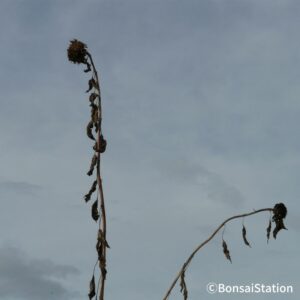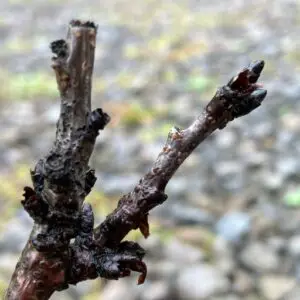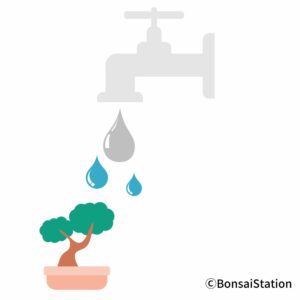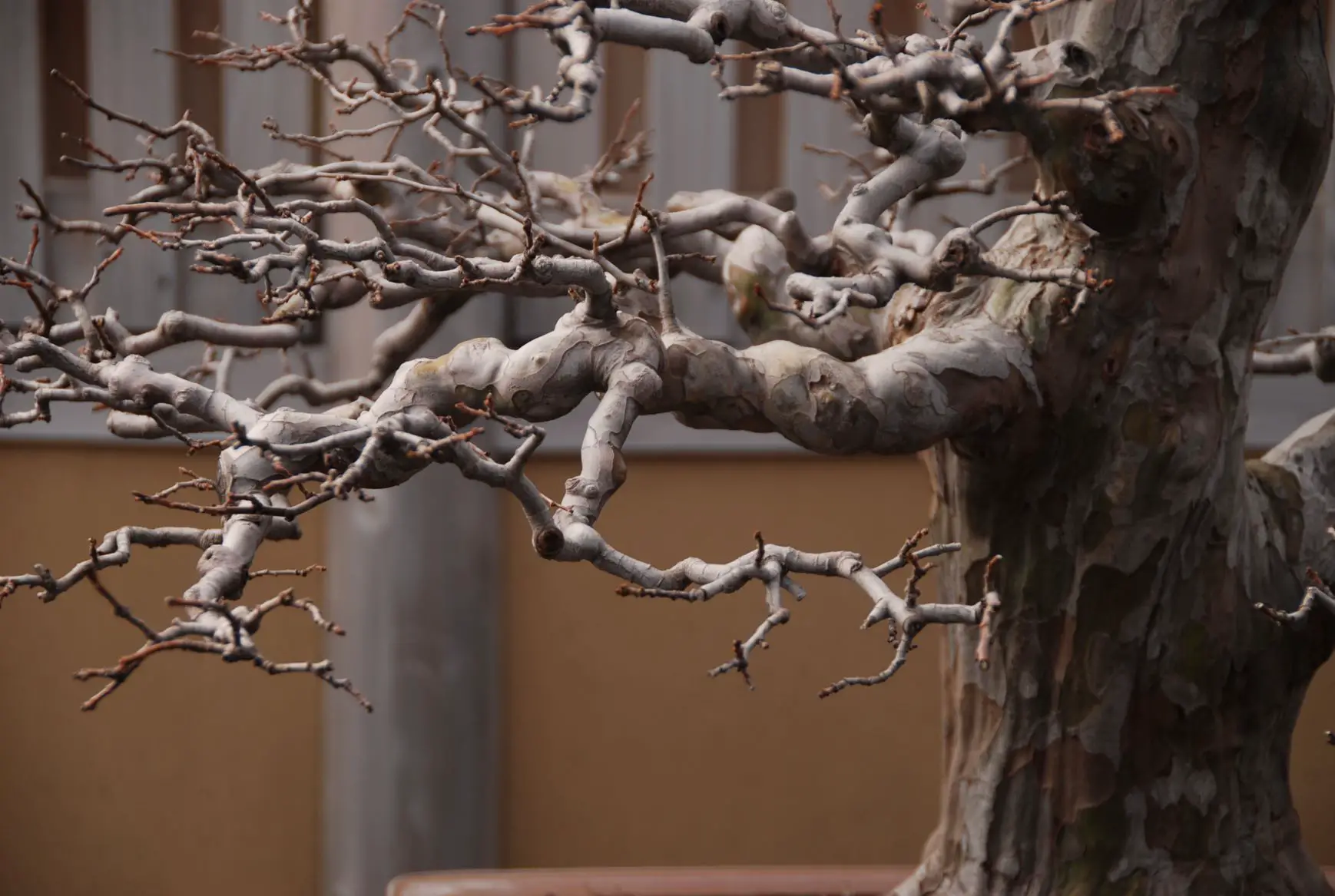If your bonsai tree has become totally dried out, these are the simple steps you can take.
To rehydrate the dried-out bonsai tree and get water back into the tissues, you need to water from the pot bottom, mist the leaves thoroughly several times a day, place the tree in half shade, and water the tree again when the soil is half dry.
Assessing the tree’s problem
How to determine the cause of wilting

If you notice your bonsai tree starting to wilt, it is important to determine why it is happening before addressing it because the wrong solution makes things worse. Wilting may or may not be because of water shortage.
Wilting can be caused by water shortage but a variety of factors can also lead to wilting, including excess water, fertilizer burn, pests/disease, lack of sunlight, or other environmental stresses.
Here is how to tell whether your bonsai tree’s wilting is caused by dry soil or other causes:
- Check the soil moisture level
- Think about when you last fertilized your tree
- Look for pests and diseases
- Check the amount of sunlight
- Think about sudden environmental change
Check the soil moisture level
One of the first things to do when you notice your bonsai tree starting to wilt is to check the soil moisture level. Stick your finger into the soil about an inch (2.5cm) to gauge how dry it is. If the soil feels totally dry, it is likely that the tree is wilting due to a lack of water.
Think about when you last fertilized the tree
Fertilizer burn occurs when a high amount of fertilizers disrupts water uptake by the roots. If you fertilized your bonsai tree a couple of days ago and noticed your tree wilting, it might be caused by fertilizer burn.
Besides giving too much fertilizers, fertilizing in the hot summer weakens bonsai trees as well because their growth rate declines during the hot season due to temperature stress.
Look for pests and diseases
Pests such as aphids and scale can sap the tree’s energy and cause it to wilt. Diseases like powdery mildew may also weaken the tree. Look for signs of infestation such as small insects, sticky residue or fungi-like substances on the leaves and branches. If you do see them, the cause of your bonsai tree wilting may be because of pests/diseases and not water shortage.
Check the amount of sunlight
If you move your bonsai trees inside the house and they start to wilt, it may be because of a lack of sunlight.
Besides a few indoor bonsai species, most of the bonsai trees are sun-loving plants; i.e. plants that grow in open places and cannot withstand a long period of time in the shade. These sun-loving plants need on average 35,000 to 40,000 lux of light density, which is normally attainable only by keeping them outside.
Think about sudden environmental change
Environmental stress such as extreme temperatures (too hot or cold) can also cause a bonsai tree to wilt. If you purchased a bonsai tree, brought it home and start to wilt, the sudden change of growing condition may be a contributing factor.
If you do not see any signs of pests/diseases or dry soil, consider whether the tree’s environment may be causing the wilting.
How to determine its viability
If your bonsai tree has become totally dried out, you may be wondering if it is too late to save it. The first step in trying to bring your bonsai back to health is to assess the damage and determine whether the tree is still viable.
To assess the damage, you have to examine the tree’s appearance, flexibility and resistance, and root system.
Appearance

Dead branch (cherry blossom)
Examine the tree’s appearance. Look for leaf color turning from shiny to dull, yellowing, or curling/scorching on the edges of leaves. Other visible damages include wrinkles/cracks to the trunk and branches and discolored buds. If most of the branches and the trunk look dark and wrinkled, your tree may be dead.
Flexibility and resilience
Next, gently bend a branch at around 90 degrees to see how flexible it is. Try doing it for other branches as well. If they snap easily or feel brittle, it could be a sign of serious drying out.

Scratch test- woody and without tree sap
If you are still not sure, you can do the scratch test. Scratch the bark on the trunk with your thumbnail. If the inside of the bark is woody without tree sap, your tree is unfortunately dead.
Root system
You should also assess the tree’s root system. Touch the surface of the soil with your finger and carefully dig the soil to examine the roots for any signs of decay or damage. Healthy roots should be white and fresh, while damaged roots are brown, crisp, and dry.
Assessing the viability
Determine the likelihood of the tree’s recovery based on the above factors. If your tree is showing some signs of life and at least a part of the root system is still intact, it has a better chance of recovery.
If in fact, all the leaves are dry and brown or fallen off, branches are snappy and roots are crisp and dry, your bonsai tree may be beyond saving. That said, trees that appear to be dead, having dropped all or most of their leaves, might recover when watered. Try to save the tree and provide the necessary care anyway. Wait until the next growing season before you give up.
Rehydrating bonsai trees
A step-by-step guide
Once you have assessed the damage and determined that your bonsai tree is still viable, the next step is to rehydrate it and get water back into the soil and tissues. This is a crucial part of the recovery process that helps the tree revive and bounce back.
Here is a step-by-step guide to rehydrating your dried-out bonsai tree.
- Water from the pot bottom by immersion method.
- Mist the leaves thoroughly several times a day.
- Place the tree in half shade.
- Water the tree again when the soil is half dry.
Water by immersion method
First and most, you should rehydrate the tree by moisturizing the soil. The root system of the tree is responsible for absorbing most of the water that the tree needs.
Watering from over the tree using a watering can would not be enough for soil that is totally dry because dry soil does not absorb water but repel it. Watering from the pot bottom is a much more efficient and certain way because immersing the pot in the water gives enough pressure to the soil to absorb water even under this situation.
Here is what you should do.

Submerge the pot in water.
-
- Fill a bucket or a container with water.
- Gently submerge the pot until the water gets slightly above the base of the trunk. You will see the bubbles coming out from the soil.
- Leave the pot in the water until the bubbles stop forming. This may take a couple of minutes or more depending on the soil’s moisture level.
- Take the pot out of the water and check if the water is running out of the drainage holes. If not, submerge the pot again until the water runs out of the drainage holes.
Mist the leaves

In addition to watering the soil, mist the leaves of your bonsai tree thoroughly several times a day to prevent leaves from losing moisture.
Water is constantly evaporated during the daytime through the leaves in a process called transpiration, which keeps plants from overheating. Water deposited on leaves by misting reduces transpiration because moisture on the leaves forms a protective barrier.
So, increasing the humidity around the tree helps to reduce the rate of transpiration and prevents it from losing water absorbed by roots. Transpiration will not occur until the water on the leaf surfaces evaporates.
If you are interested in how misting helps bonsai, the following post might be helpful.
Is defoliating a good idea?
You may be wondering if removing all leaves intentionally (= defoliating) might prevent them from losing water the tree desperately needs. But I should say defoliating is a bad idea to address this problem.
Losing leaves during the growing season is very stressful and should not be done to a tree that is already in distress. Defoliating requires a significant amount of energy and a tree that is already struggling may not have the reserves to support new growth.
Misting is a much more effective and totally non-invasive way of reducing transpiration.
Place the tree in half shade

Avoid strong wind and direct sunlight.
After watering and misting a dried-out bonsai tree, place the tree in a half shade where it can avoid the strong wind. Full sun can be too intense for a tree that is still fragile. A location with some morning and/or afternoon sun, but not full sun all day is ideal. If not, you can use a plant cover to block the strong sunlight but provide the tree with the light it needs.
Water the tree again when the soil is half dry

After watering your tree, it is important to allow the soil to partially dry out before watering again. This will help to prevent the soil from becoming waterlogged and promote new root growth. It may take more time than you think since part of your tree’s root system may be dead from drying out.
Plant roots need oxygen to burn carbohydrates for the energy to grow and repair. Roots need moisture but when immersed in water, they will suffocate. Remember that excess water can also kill your tree.
Do not forget to mist the leaves several times a day until the tree is fully recovered.
How long to recover from drought
It may take a few weeks or even months for a bonsai tree to fully recover from a period of prolonged dryness. The amount of time it takes varies depending on several factors:
- Type of tree: deciduous trees are more susceptible to water shortage, thus more time for recovery;
- Age of the tree: the more established, the faster recovery (old trees might need more time though);
- When it occurred: drying out during hot season may take more time for recovery; and,
- Severity of the drying out.
That said, you should begin to see some signs of recovery within a few days of watering the tree. Here are a few visible signs that show your bonsai tree is recovering:
- Improved color: The leaves start to look shinier and more vibrant. The bark becomes more smooth and lively.
- New growth: The tree begins to produce new leaves or shoots.
Other signs include branches becoming more elastic and new roots growing. But do not touch the tree to check these signs. Touching and exposing roots are stressful. Your tree has a better chance of recovery if you let all its energy go to healing.
How to properly water bonsai trees

Proper watering is an essential part of bonsai tree care. There are various reasons why a bonsai tree may die but by far, watering is the number 1 cause of bonsai tree death.
As a general rule (under a temperate climate), you should water your bonsai tree;
- once a day in spring and fall,
- twice a day in summer, and,
- once every three days in winter.
Water thoroughly to the extent that it runs out of the base of the pot.
This general rule should be altered depending on several factors such as the soil in which your bonsai tree is planted, the climate/weather of your region, and tree species and its growth stage.
If you aren’t sure, check your bonsai trees a couple of times a day especially when the season is changing. Remember that both lack and excess water could lead to a serious problem and that symptoms caused by both problems may look the same.
For more about watering bonsai, please check the post below.



